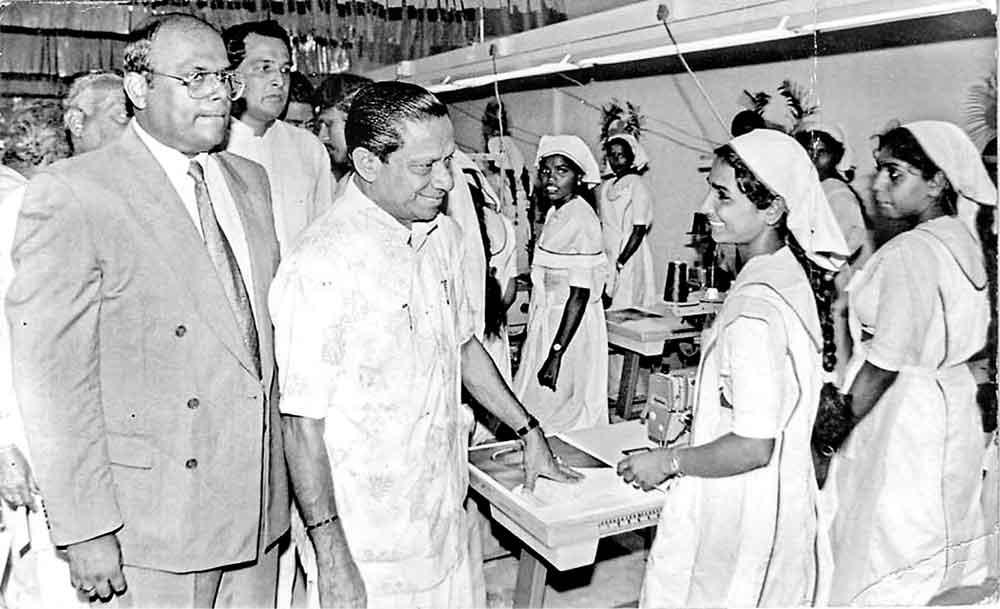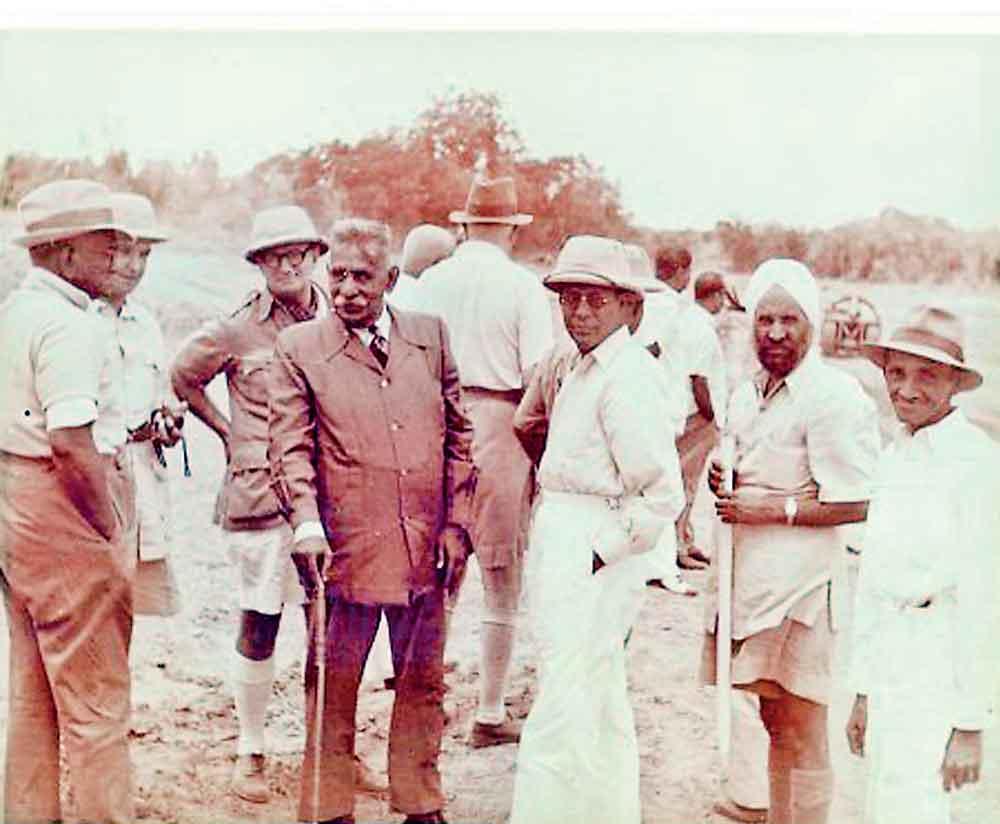Reply To:
Name - Reply Comment

Late President Premadasa focused on garment industry
 Everybody in Sri Lanka expects and wants an educated parliament. However, we continue to miss the fact that our uneducated former leaders of Sri Lanka were able to do much better in the past.
Everybody in Sri Lanka expects and wants an educated parliament. However, we continue to miss the fact that our uneducated former leaders of Sri Lanka were able to do much better in the past.
For example, our former President, Ranasinghe Premadasa was able to implement 200 garment factories for the first time. All educated people and people involved in the garment industry said it was not possible. It was an international level proposal and he was able to get more than US $ 5 billion per year.
Then we had our first Prime Minister D.S. Senanayake, who colonised Sri Lankan forests and converted them into rice growing gold mines. Incidentally, Jews, who are supposed to be very intelligent, also started colonisation almost at the same time. Jews still have serious problems more than seven decades as they colonised the places where people were already living. Our man was smarter as he colonised jungles where only animals lived. Animals do not and cannot fight for their rights.
D.S.Senanayake also has broad-based science education unparalleled in the world. For example, around 60 schools sent students to the university in the 60s to 1,000 in the 70s, 2,000 in the 80s.
Both our former leaders were certainly not educated like our present leaders.
What is required is thinking out of the box, considering the ideas given by others, taking the possible risks and using political power.
Current Economic Problems
Let us consider our present economic problem now.
Prof. Sirimal Abeyratne, Emeritus Professor of Economics of the University of Colombo noted the following in his column ‘Transforming of a Crippled Economy’ in The Sunday Times June 2,2024.
We were only able to secure about US $ 12 billion in 2023.That is the income of one company of our neighbouring countries, which counts their export earnings in terms of 300 -500 billion dollars. For instance, last year Malaysia earned $352 billion, Singapore 515 billion, Thailand 287 billion, Vietnam 370 billion and India 437 billion.
At the time of economic collapse in 2022, about half of export earnings were needed to pay off the annual foreign debt installment.
In addition, about twice the foreign exchange earnings were also needed to finance imports.
In other words, we have only US $ 12 billion in 2023 but required about US $ 30 billion just to survive.
We did survive by giving our important assets on long term lease (50-100 years etc.) as the government is not allowed to sell.
We see a lot of examples in Colombo such as in Galle Face. Army Cricket ground, Rugger ground, quarters and offices, now converted to leading hotels, shopping complex and offices. The Fisheries Department head office is now part of Hotel Samudra. Huge building complex in the Building Department head office premises in Fort opposite Telecom head office and others, the list is endless.

First Prime Minister D S Senanayake was a champion of agriculture
We have had 200 years of continuous English education, free economy before someof our neighbouring countries, a good geographical location, decades of free education, universities before Malaysia, and our literacy rate was comparatively higher. Yet, we are only able to get just 3% of what others are capable of.
Out of the Box Thinking
We require solutions on an urgent basis. Out of the box thinking is the need of the hour.
It is reasonable to expect at least around 20% (US $ 300-500 billion per year) of what others are able to get.
Online higher education is a good industry. The courses increased by about 300-fold during the last five years. This is the only industry which gives 90% net profit. This should be tapped.
My personal opinion is, that I have a good feasible proposal to get at least US $ 50 billion per year. Higher Education Market size was valued at USD 736.81 billion in 2023 and is projected to reach USD 1,569.36 billion by 2030. USD 50 billion is just the tip of the ice bag. It is very big for Sri Lanka as we can pay all our loans in one year. We do not need to pay around US $ 6 billion per year for debt service. We can allocate the same US $ 6 billion (approx. Rs 1,800 billion) per year for subsidies for the poor, such as rice, flour, dhal at Rs.100/per kilo and eggs for Rs.25 each, pension of Rs.10,000/ per month for all above the age of sixty-five years. Also free meal for school students.